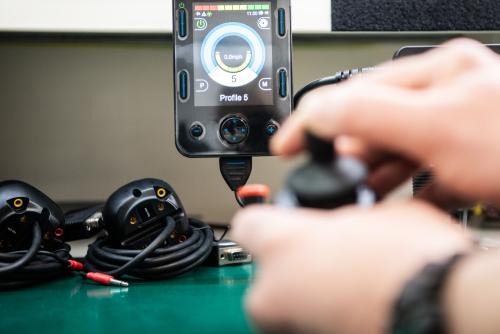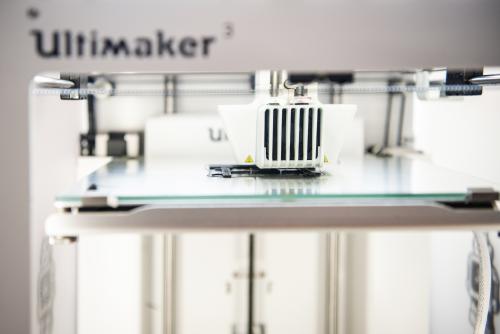Why we do what we do
Mobility is a person's ability to move his/her body within an environment or between environments and the ability to manipulate objects. Together, these actions allow someone to pursue all kinds of life activities.
This ability can be compromised by impaired body functions. Impairments can have a gradual onset (e.g. Multiple Scleroris) or can begin suddenly (e.g. traumatic spinal cord injury). But regardless of which body structure or function is impaired, technology can improve mobility.
One of these technologies is power mobility. Power mobility does not just bring someone from point A to point B, but it leads to improved self-esteem, decreased pain, increased activity levels and more social participation.
A standard electrical wheelchair comes with a standard hand joystick. However, in some cases the strength of the hand is impaired, reaching the standard joystick is not possible or hand function is impaired completely and then another solution has to be found.

It is mo-vis goal to offer a complete range of alternatives for people who don’t have enough force to move that standard joystick or who want to place it elsewhere – a location where they have better access and control.
We want to do this both in breadth and in depth.
In breadth means that we are expanding our line of proportional controls.
We already have the All-round (Light) joysticks, which are compact versions of the standard joysticks on electrical wheelchairs, but they can be placed anywhere the user has easy access to.
For people with very little force, we have the Micro and Multi joysticks, which can be controlled by hand, but also by the fingers or the chin. People with spastic movements or extreme force development, can benefit from the Heavy Duty Joystick or the Heavy Duty Kit.
It is possible that some users cannot drive all day themselves due to fatigue, for instance, or that they find it difficult to maneuver in tight spaces and in that case there is also a very intuitive attendant control available.
But... we are also working on controls for other alternative access points, such as the foot.

In depth means that we want to provide more and better alternatives for mounting the controls. We have completely redesigned our Multi and Manual Swing and we will also offer our own Chin control Harness with dedicated Q2M mounting parts.
We have also extended our range of accessories in the past year, such as the Actuator Keypad (Pro) and Twister Pro.
In depth also means that we are designing our products so they are compatible with different kinds of wheelchairs electronics. For example, our Scoot Control is now also available in LiNX version. This is very important, as incompatibility issues between components and brands are frustrating hurdles for clinicians and users to create fully customized devices.

Sometimes the decision to use an electrical wheelchair and its accompanying assistive devices is just another decision made during rehabilitation after a trauma. In other cases it is the result of accepting a new lifestyle as a disease or disability progresses.
Whatever the case may be, we want everyone to be able to find a device that adequately meet their needs.
Studies show that some wheelchair users see their wheelchair as an extension of themselves. This shows then, that it's very important to find a perfect match for every wheelchair user.